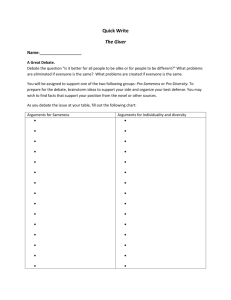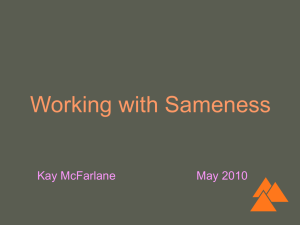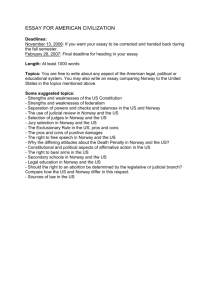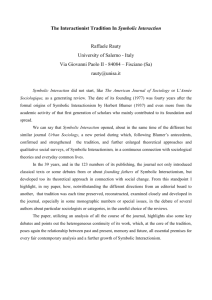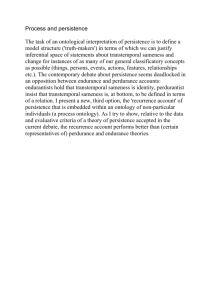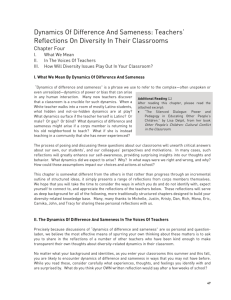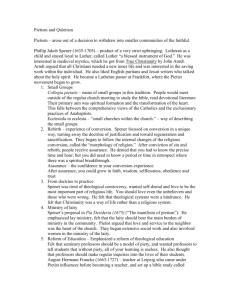Home decoration as popular culture
advertisement
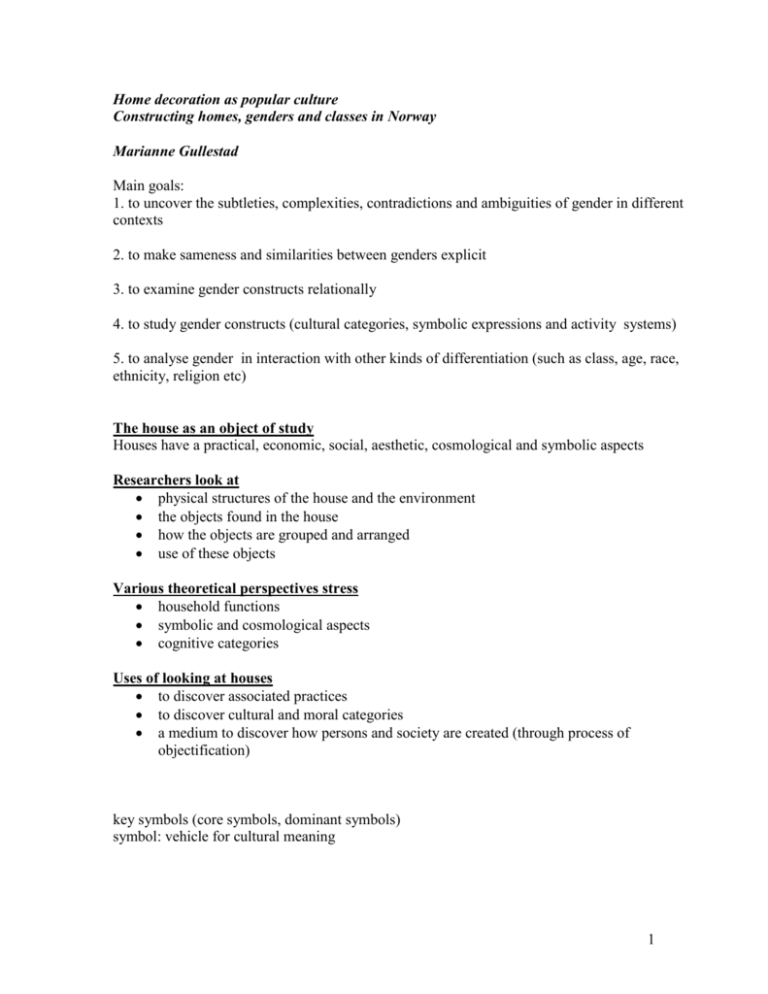
Home decoration as popular culture Constructing homes, genders and classes in Norway Marianne Gullestad Main goals: 1. to uncover the subtleties, complexities, contradictions and ambiguities of gender in different contexts 2. to make sameness and similarities between genders explicit 3. to examine gender constructs relationally 4. to study gender constructs (cultural categories, symbolic expressions and activity systems) 5. to analyse gender in interaction with other kinds of differentiation (such as class, age, race, ethnicity, religion etc) The house as an object of study Houses have a practical, economic, social, aesthetic, cosmological and symbolic aspects Researchers look at physical structures of the house and the environment the objects found in the house how the objects are grouped and arranged use of these objects Various theoretical perspectives stress household functions symbolic and cosmological aspects cognitive categories Uses of looking at houses to discover associated practices to discover cultural and moral categories a medium to discover how persons and society are created (through process of objectification) key symbols (core symbols, dominant symbols) symbol: vehicle for cultural meaning 1 House as a key symbol in Norway serves to create and express specific identity and intimacy (gender, social class and background) House as a key symbol in Norway complex set of cultural categories values relations Social-historical context: rural division of labour according to gender religious pietism recent urban migration (mid-19th century) relatively little economic differentiation small landed aristocracy arrival of welfare state ideology of equality as sameness ideology of equality as sameness in gender relationships (in the households) single family house mobility in the cities (discontinuity of houses from generation to generation) Home (hjem) hierarchically ordered warmth, security, cosiness (boredom +) inside-outside (home vs. outside world) inside-outside (private-public) time-dependent nature (human functions) vs. culture (socializing) division of rooms according to generations Ordinary people in Bergen working-class families men-women little education men: salary earners women: marginal jobs three-room apartments, home making is important, new furniture (class background), order and cleanliness, symmetry, wholeness and style, living room display, kitchen (multipurpose) 2 home is a female universe (controls, decides) garage, cellar and the car are male domains (man is not at home, vulnerable) Reasons for the preoccupation with homes in Norway: cold climate secularized religious pietism creativity and expression (popular culture-consumption) identity work patterns egalitarian ideologies (sharing and unity of men and women) resistance against commercialization status Home decoration inside (personal, expressive) vs. outside (impersonal, mute) self-sufficient & independent personal & unique (social class) diligence, simplicity, realistic outlook supposedly not ostentatious/extravagant practicality modesty creativity Home is an expressive statement personal identity, family identity, social class (love, sharing, closeness, integration, unity, safety, security, self-sufficiency, control, order, comfort, world view) Home is a source of resistance (wholeness and closeness) whole vs. fragmentation (post-modernity?) order vs. chaos (sanity vs. anomie) control vs. no control power vs. disempowerment personal vs. impersonal informal vs. formal bureaucracy and market healing vs. sickness sacred in a way secularized way 3 Constructing genders female hand (aesthetic, clean, caring/close, comforting, creating) handy man (potent, able) sharing and togetherness (rural ≠ city) reflected in the organization of space division of tasks has to be negotiated (symbolic value of tasks is gender-specific) sameness ideal home decoration love "handy man" dependent on the "female hand" Constructing classes middle class vs. working class (mutually constructed) different objects, similar order same categories, different styles working class: passive & traditional - women middle class: active & progressive - men working class: passive & traditional - women middle class: active & progressive - men working class to middle class as women to men working-class marriage – dependency (explicit) middle-class marriage – dependency (implicit) love = dependency (sharing) 4
